This Article has been revised, edited and added to, by Poulomi Chakraborty.
- The Basics of Funnel Analysis
- Diving into the Intricacies: A Deep Dive into Funnel Analysis
- Customizing Your Funnel
- Tools of the Trade
- The Role of A/B Testing
- The Importance of User Feedback
- Integrating Cross-Channel Analysis for Comprehensive Insights
- Leveraging Cross-Device Behavior to Optimize the Funnel
- Advanced Segmentation for Precision Targeting
- Predictive Analytics: Forecasting and Influencing User Behavior
- Crafting a Cohesive Journey Across All Touchpoints
- Personalization at Scale Through Machine Learning
- Ethical Data Use and Privacy Compliance
- Continuously Testing and Refining Your Funnel
- Strategies for Funnel Optimization and Common Challenges
- Strategies for Each Stage
- Common Challenges & Solutions
- Harnessing the Power of Customer Journey Mapping
- Implementing Dynamic Content Personalization
- Optimizing for Mobile-First Experiences
- Leveraging Social Proof at Strategic Points
- Enhancing User Experience with AI and Chatbots
- Focusing on Speed and Simplicity
- Creating a Feedback Loop with Customers
- Continuous Learning and Adaptation
- The Psychology Behind Conversion Funnels
- The Power of First Impressions
- Curiosity & Engagement
- Building Trust
- Urgency & Scarcity
- Alleviating Commitment Concerns
- Leveraging Emotional Triggers to Drive Actions
- Creating a Sense of Community
- The Principle of Reciprocity in Conversion Optimization
- Utilizing Storytelling to Foster Connection and Conversion
- The Impact of Visuals on Psychological Engagement
- Addressing Cognitive Biases to Influence Decision Making
- Ensuring Cognitive Ease Throughout the User Journey
- The Psychology Behind Conversion Funnels
- The Power of First Impressions
- Curiosity & Engagement
- Building Trust
- Urgency & Scarcity
- Alleviating Commitment Concerns
- Cultivating Trust Through Transparency
- Enhancing Decision-Making with Social Proof
- Optimizing for Emotional Engagement
- Employing Cognitive Ease for Smoother Conversions
- The Impact of Color Psychology
- In Conclusion: The Art & Science of Funnel Analysis
The realm of online business is both vast and intricate. With the sheer volume of user interactions, understanding the pathway of a potential customer, from first interaction to the final conversion, can feel like navigating a maze in the dark. Enter funnel analysis: a beacon of clarity in the murky waters of digital customer journeys.
For businesses, both big and small, the process of refining and optimizing conversion rates is continual. In the digital space, where user attention is fragmented and fleeting, ensuring that potential customers smoothly progress through various stages of engagement is crucial. Funnel analysis, at its core, breaks down this journey, allowing businesses to pinpoint where users drop off and, more importantly, why.
But what exactly is funnel analysis? How can businesses harness its power for better conversion rates? Let’s embark on a journey of understanding, step by step, to unlock the secrets of funnel analysis and its pivotal role in conversion optimization.
The Basics of Funnel Analysis
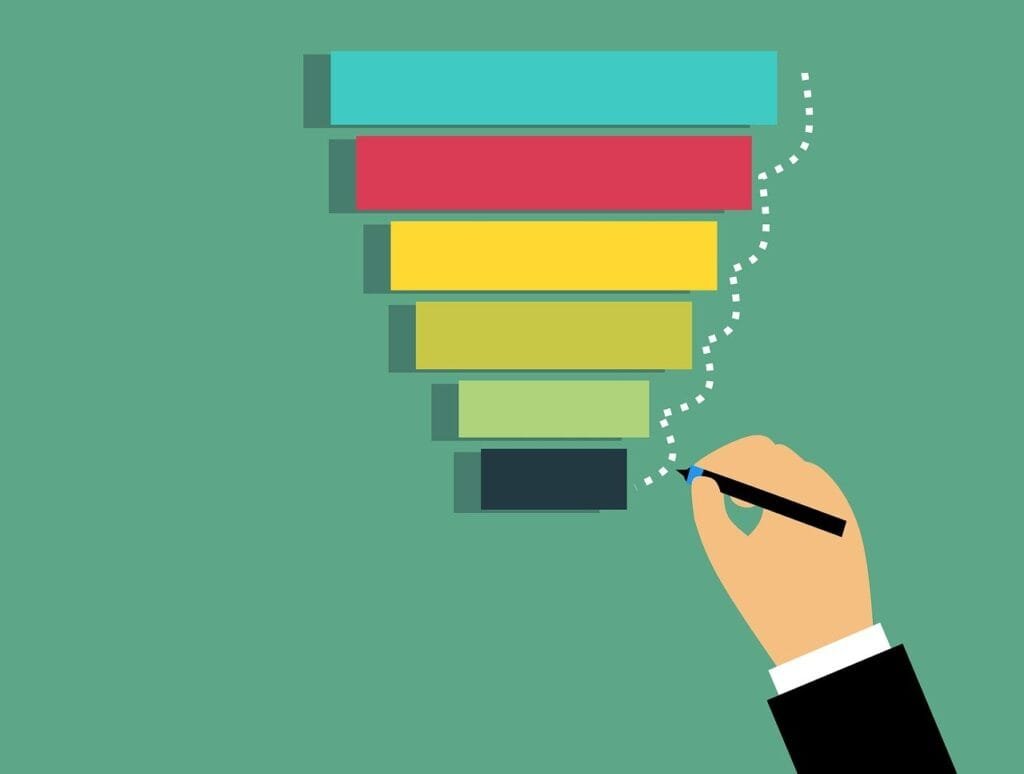
Imagine a funnel, wide at the top and narrow at the bottom. At the top, you have a vast number of users interacting with your digital presence in some form—perhaps visiting your website, clicking on an ad, or engaging with a social media post. As these users move down the funnel, their number dwindens, with only a fraction making it to the end, resulting in a conversion, be it a sale, a sign-up, or any other desired action.
Stages of the Funnel
Every funnel comprises various stages, each representing a step in the user’s journey. Common stages include:
- Awareness: The user becomes aware of your product, service, or brand.
- Interest: The user shows a keen interest, perhaps by reading a blog post or browsing product listings.
- Consideration: The user is actively weighing the decision to proceed, comparing options or reading reviews.
- Action: The final step, where the user completes the desired action, such as making a purchase.
Why Funnel Analysis Matters
By breaking down the user journey into distinct stages, businesses can:
- Identify stages with significant drop-offs, signaling a problem area.
- Tailor content and user experience to the needs and expectations of users at each stage.
- Allocate resources effectively, focusing on stages that yield the best return on investment.
Understanding User Behavior: Beyond the Basics
In the quest to optimize conversion rates through funnel analysis, startup founders must dive deeper into the nuances of user behavior. It’s not enough to merely observe the stages of user engagement; founders must seek to understand the ‘why’ behind each action. This deeper understanding begins with segmenting your audience to tailor the analysis more effectively.
Segmenting Your Audience for Precise Insights
Segmentation involves categorizing your users based on specific characteristics such as demographics, behavior on your site, acquisition channels, and more. This approach allows you to identify patterns or trends within specific groups, enabling a more tailored strategy to guide users through the funnel.
For instance, users who find your website through organic search may have different behaviors and expectations than those who click through from a social media ad. Recognizing these differences is crucial for creating personalized experiences that effectively guide each segment through the funnel stages.
Leveraging User Intent to Refine Your Funnel
Understanding user intent is pivotal. Why did a user visit your site? Were they seeking information, comparing products, or ready to make a purchase? By aligning your funnel stages with the user’s intent, you can ensure that each interaction is meaningful and moves them closer to conversion.
To leverage user intent, start by analyzing the entry points to your website. Pages that rank well for informational keywords in search engines are likely to attract users in the Awareness stage, while product-specific landing pages might draw in users who are further along in the funnel. Tailor the content and calls-to-action (CTAs) on these pages to match the user’s expected intent.
Crafting a Dynamic Funnel
The digital landscape is ever-changing, and so are the behaviors and preferences of your audience. A static funnel might work for a time but can quickly become outdated. To stay ahead, periodically review and adjust your funnel based on fresh data. This dynamic approach ensures that your strategies remain effective and relevant.
Incorporate tools like heat maps, session recordings, and user feedback to gain insights into how users interact with your site. These tools can reveal hidden friction points or areas of confusion that might be causing drop-offs.
Strategic Funnel Optimization Techniques
After mapping out the journey and understanding user behavior, focus on strategic optimization techniques to enhance each stage of the funnel. These techniques should not only aim to smooth out the journey but also to resonate on a personal level with your audience.
- Personalization: Use data insights to tailor the user experience. This can range from personalized email marketing campaigns to dynamic website content that reflects the interests and behaviors of the user.
- Friction Reduction: Identify and eliminate any obstacles that could deter users from moving to the next stage. Simplify forms, enhance page load speeds, and ensure that navigation is intuitive.
- Value Proposition Clarity: Make sure your value proposition is clear and compelling at every stage of the funnel. Users should understand what sets your product or service apart from the competition and why it’s the right choice for them.
Ethical Considerations in Funnel Optimization
While striving to optimize conversion rates, it’s essential to maintain ethical standards. Transparency, privacy, and respect for the user’s choices must be paramount. Avoid using manipulative tactics or obscuring information for the sake of advancement in the funnel. Trust and authenticity not only lead to better conversion rates but also build long-term relationships with your customers.
Refining the basics of funnel analysis requires a deep dive into user behavior, an understanding of user intent, and the application of strategic optimization techniques. By segmenting your audience, aligning your funnel with user intent, and ensuring a dynamic approach to optimization, startup founders can significantly enhance their conversion rates. Remember, the goal is not just to convert but to connect and build lasting relationships with your users.

It’s an absolute pleasure to share how we at CleanItSupply.com planned and implemented our inbound conversion funnel. The process was a continuous one, interlaced with detailed planning, experimental executions, tracking, and improvement.
We started by creating educational content including how-to videos, blog posts, and product guides to draw potential consumers into our funnel. With me, Danny D, personally making over 6,000 product videos, we successfully captured interest and nurtured leads.
To optimize and track these efforts, we utilized CRM software and analytics tools that allowed us to monitor user behavior and capture key data, such as bounce rate, conversion rate, etc. This informed us about where potential customers dropped off and allowed us to refine our funnel accordingly.
In terms of improvement, we primarily tested multiple versions of landing pages, calls to action, and email marketing campaigns.
Key takeaways? Keep testing, analyzing data and optimizing for conversion should be an ongoing process. And most importantly, provide value upfront. An informed customer is likely to become a loyal customer.
Dan Dillon, CEO of CleanItSupply.com
Diving into the Intricacies: A Deep Dive into Funnel Analysis
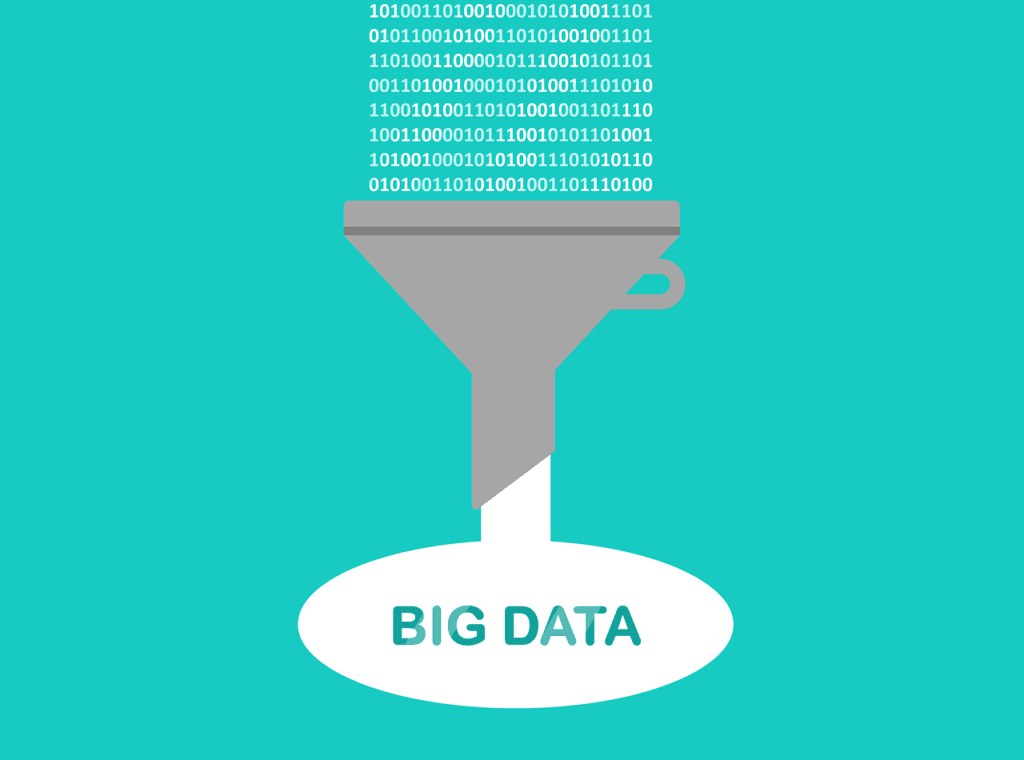
As we delve deeper into funnel analysis, it’s imperative to remember that while the overarching structure might remain consistent across businesses, the specific stages, and the nuances therein, can vary based on the industry, target audience, and business objectives.
Customizing Your Funnel
Every business is unique, and so is its funnel. For a SaaS company, the funnel might involve stages like free trial sign-ups, user onboarding, and then subscription purchases. On the other hand, an e-commerce site might focus on product views, cart additions, and eventual purchases.
Key Takeaway: It’s crucial to customize the funnel based on the specific user journey pertinent to your business. Use analytics to inform your decisions and map out the most common paths users take towards conversion.
Tools of the Trade
Funnel analysis is powered by analytical tools that capture and represent data in a comprehensible manner. Some renowned tools include Google Analytics, Mixpanel, and Kissmetrics. These tools provide insights such as:
- User progression through the funnel.
- Drop-off points, helping identify problem areas.
- Time spent at each stage.
- Demographic data of users progressing to the next stage vs. those who drop off.
Key Takeaway: Utilize analytical tools to not only visualize your funnel but also to glean actionable insights. Regularly update and refine your toolset to ensure you’re capturing the most relevant data.
The Role of A/B Testing
One of the most effective strategies to optimize your funnel is A/B testing. It involves comparing two versions of a webpage or app against each other to determine which one performs better in terms of converting users.
For instance, if you observe that many users drop off at the ‘Cart’ stage, you could A/B test different checkout designs or processes to see which version retains more users.
Key Takeaway: Regularly run A/B tests at stages with significant drop-offs. Even small changes, like button colors or CTA phrasing, can lead to significant improvements in conversion rates.
The Importance of User Feedback
While quantitative data from analytics provides a bird’s eye view of the funnel, qualitative data from user feedback offers on-the-ground insights. Surveys, feedback forms, or even user testing sessions can shed light on why users might be dropping off at a particular stage.
Perhaps a form is too complicated, a page loads too slowly, or the checkout process feels insecure. User feedback can pinpoint these issues.
Key Takeaway: Always encourage and prioritize user feedback. It offers invaluable insights that can drive substantial improvements in the user journey.
Integrating Cross-Channel Analysis for Comprehensive Insights
In today’s multifaceted digital landscape, understanding the interconnectedness of various channels and their impact on your funnel is essential. A user’s journey might start on social media, continue through an email campaign, and finally convert through a direct website visit. Cross-channel analysis enables startups to track these journeys, providing a holistic view of how different channels contribute to conversions.
Leveraging Cross-Device Behavior to Optimize the Funnel
With the increasing use of multiple devices by consumers, it’s crucial to adapt funnel analysis to account for cross-device behavior. Users may discover your brand on mobile but switch to a desktop for final purchases. Incorporating cross-device tracking tools into your analytics suite allows for a seamless user experience, ensuring that the funnel is optimized for conversion regardless of the device used.
Advanced Segmentation for Precision Targeting
Beyond basic demographic or behavioral segmentation, leveraging advanced segmentation techniques can unveil deeper insights into user preferences and intent. Consider segmenting by lifetime value, purchase frequency, or even by the type of content consumed. This nuanced understanding enables the creation of highly targeted strategies that speak directly to the user’s needs and desires at each funnel stage.
Predictive Analytics: Forecasting and Influencing User Behavior
Utilizing predictive analytics can transform how startups approach funnel optimization. By analyzing historical data and user behavior patterns, predictive models can forecast future actions of users within the funnel. This foresight allows for proactive adjustments to the funnel, enhancing user experience and increasing the likelihood of conversion.
Crafting a Cohesive Journey Across All Touchpoints
Ensuring consistency across all user touchpoints is paramount. This cohesion involves aligning messaging, design, and user experience across every platform and device. A disjointed journey can confuse users and lead to drop-offs. Conduct regular audits of all touchpoints to ensure they contribute positively to the funnel’s effectiveness.
Personalization at Scale Through Machine Learning
Machine learning algorithms offer the ability to personalize user experiences at scale. By analyzing vast amounts of data, these algorithms can deliver content, product recommendations, and offers tailored to the individual user’s preferences and stage in the funnel. Implementing machine learning can significantly increase engagement and conversion rates by making the user feel understood and valued.
Ethical Data Use and Privacy Compliance
As you dive deeper into funnel analysis, ethical considerations around data use and privacy cannot be overstated. Ensure compliance with regulations such as GDPR and CCPA by implementing transparent data collection practices and giving users control over their data. Trust is a critical component of user retention and conversion; respecting user privacy is foundational to building this trust.
Continuously Testing and Refining Your Funnel
The digital landscape and user behavior are constantly evolving. As such, the optimization of your conversion funnel should be an ongoing process. Employ A/B testing, user surveys, and feedback loops to continuously refine and adapt your funnel strategies. What works today might not work tomorrow, so remain agile and responsive to data insights.
A deep dive into funnel analysis goes beyond the surface-level understanding of user progression through the funnel. It involves a comprehensive approach that considers cross-channel and cross-device behaviors, leverages advanced segmentation and predictive analytics, and ensures a cohesive journey across all touchpoints. By personalizing the user experience at scale and maintaining an ethical stance on data use, startups can create a funnel that not only converts but also builds lasting relationships with their audience.

As the Founder & CEO of ToTheCloudVaporStore.com, I’ve had the intriguing challenge of erecting inbound conversion funnels in the dynamic terrain of the cannabis industry.
Our planning phase involved intensive examination of our customer journey, from the initial search for vaporizers or cannabis products as an overarching query, down to very specific product types and brands. We implemented varied assets like engaging content, SEO keywords, and digital marketing tools to draw in users.
The use of comprehensive analytical tools helped us store, track, and enhance these efforts. For instance, Google Analytics played a key role in tracking the path of the user from the landing page until purchase completion, aiding us in identifying areas of friction.
We continuously improved by performing A/B testing where different versions of a page were shown to users, and the version with higher conversion was taken onboard. One key takeaway: never underestimate the power of a well-crafted landing page.
It was a game-changer for our conversion rates. Another insight was the importance of building trust in this industry. We took steps to ensure our site reflected responsibility and credibility.
I would be happy to dive deeper into our experiences, tests and the unique challenges since things tend to work a bit differently in the cannabis e-commerce space.
Tyler Browne, Founder & CEO of To the Cloud
Strategies for Funnel Optimization and Common Challenges
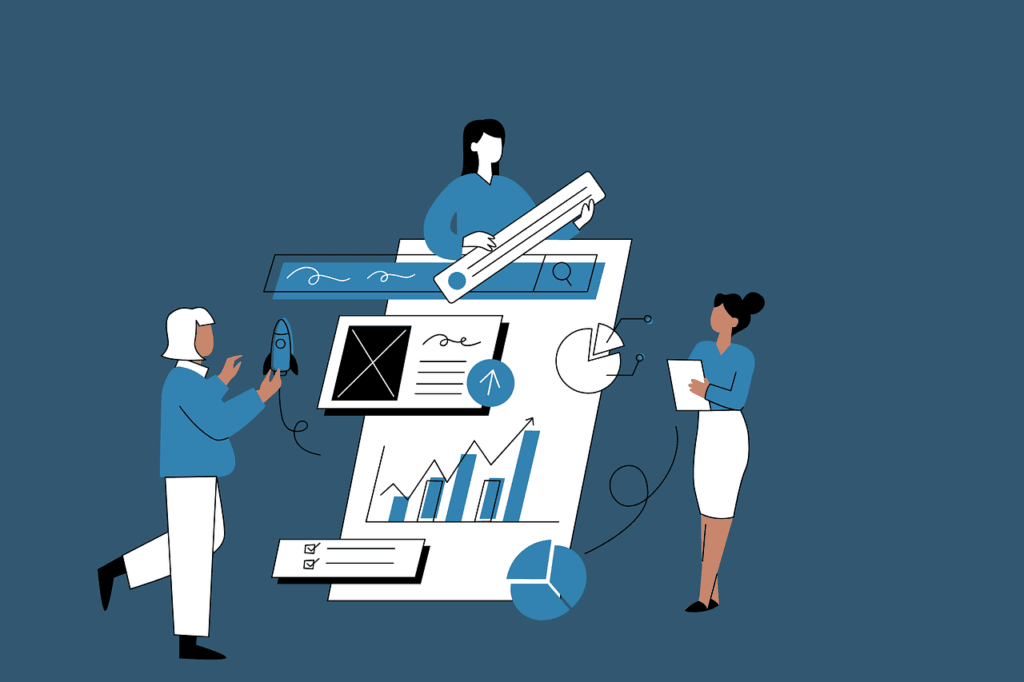
As we’ve ventured deeper into the labyrinth of funnel analysis, it becomes evident that understanding the drop-off points is only half the battle. The true challenge lies in implementing effective strategies that optimize each stage and address the common pitfalls that deter users from advancing in their journey.
Strategies for Each Stage
- Awareness: The top of the funnel is all about capturing attention.
- Content Marketing: Regularly publish relevant, high-quality content that caters to your target audience’s interests and pain points.
- Social Media: Engage with users on platforms they frequent, using targeted ads to enhance visibility.
- SEO: Optimize your website to rank high on search engines for relevant keywords.
- Interest:
- Interactive Content: Use quizzes, polls, or interactive infographics to pique and retain interest.
- Retargeting: Implement retargeting campaigns to remind users of your offerings after they’ve shown initial interest.
- Consideration:
- Product Demos & Webinars: Showcase your product or service, highlighting its unique selling points.
- Testimonials & Reviews: Display positive feedback from other customers to build trust.
- Action:
- Simplified Checkout: Minimize the steps and fields required to complete a purchase or sign-up.
- Trust Signals: Use security badges, guarantees, and clear return policies to alleviate last-minute hesitations.
Common Challenges & Solutions
- High Bounce Rate at the Awareness Stage: This suggests that users are not finding what they expect upon landing on your website.
- Solution: Ensure that your ads and promotional material accurately represent your offerings. Optimize landing pages for clarity and relevancy.
- Cart Abandonment: A frequent challenge for e-commerce businesses where users add products to their cart but don’t finalize the purchase.
- Solution: Implement cart abandonment emails or retargeting ads. Offer incentives like discounts or free shipping to entice users back.
- Solution: Offer time-sensitive deals or display stock scarcity to create a sense of urgency.
- Low Conversion Even After High Engagement:
- Solution: Refine your value proposition. Perhaps users like your content but don’t see a compelling reason to buy your product or service. Address objections through FAQs or direct engagement.
Harnessing the Power of Customer Journey Mapping
Understanding the full scope of your customers’ experiences from initial contact through to post-purchase engagement is vital. Customer journey mapping involves creating a detailed visualization of every touchpoint a customer has with your brand. This tool allows startups to identify not just the major drop-off points but also the subtle nuances that could be enhancing or hindering the customer experience. Armed with this insight, you can create a more cohesive and engaging journey that naturally guides users towards conversion.
Implementing Dynamic Content Personalization
As the digital landscape becomes increasingly saturated, the need for content that resonates personally with users has never been greater. Dynamic content personalization involves tailoring the content displayed on your website, emails, and ads based on the user’s past behavior, demographics, and engagement level. This strategy ensures that every interaction with your brand feels relevant and meaningful to the user, significantly increasing the likelihood of progressing through the funnel.
Optimizing for Mobile-First Experiences
With the majority of digital interactions now occurring on mobile devices, optimizing your funnel for mobile-first experiences is non-negotiable. This goes beyond responsive design to encompass the entire mobile user experience, including page load times, navigation ease, and the simplicity of completing forms or making purchases. A mobile-optimized funnel not only caters to the growing number of users preferring mobile devices but also aligns with search engines’ mobile-first indexing practices, enhancing your SEO efforts.
Leveraging Social Proof at Strategic Points
Incorporating social proof, such as customer testimonials, ratings, and reviews, at key stages within your funnel can significantly impact conversion rates. This strategy taps into the psychological principle of normative social influence, where people conform to what they believe others are doing. Strategically placing social proof can alleviate concerns and validate the user’s decision to move forward in the funnel, particularly at critical decision-making points.
Enhancing User Experience with AI and Chatbots
Artificial intelligence (AI) and chatbots can play a pivotal role in funnel optimization by providing immediate assistance and personalized recommendations. Implementing AI-driven chatbots on your site can help answer user queries in real-time, guide them through the buying process, and even recover potential drop-offs by engaging users who show signs of leaving without converting. This real-time interaction enriches the user experience, keeping users engaged and moving them through the funnel more efficiently.
Focusing on Speed and Simplicity
In the digital world, speed is of the essence. A delay of even a few seconds in page load time can lead to increased bounce rates and lost conversions. Ensuring that your website and landing pages load quickly is crucial for keeping potential customers engaged. Similarly, simplifying the conversion process by minimizing the number of steps required to make a purchase or sign up can remove barriers to conversion, making it easier for users to complete the desired action.
Creating a Feedback Loop with Customers
Building a mechanism to regularly collect and analyze feedback from your customers is invaluable for funnel optimization. This feedback loop can provide direct insights into what’s working and what’s not, straight from your target audience. Implementing regular surveys, encouraging reviews, and monitoring social media can provide a wealth of information that can be used to refine your funnel strategies over time.
Continuous Learning and Adaptation
The digital market is dynamic, with trends and user behaviors constantly evolving. A successful funnel optimization strategy involves continuous learning, testing, and adaptation. Stay informed about the latest digital marketing trends, technologies, and best practices. Regularly reviewing your funnel’s performance, experimenting with new tactics, and being willing to pivot based on what the data tells you is essential for maintaining an effective conversion funnel.
Expanding the strategies for funnel optimization involves a holistic approach that touches on every aspect of the user’s journey. From leveraging advanced technology like AI and chatbots to focusing on the basics of mobile optimization and speed, each element plays a crucial role in guiding users through the funnel. By continuously learning and adapting to the changing digital landscape, startups can overcome common challenges and achieve better conversion rates.

Planning our TrackingMore inbound conversion funnel started as lunchtime chats between members of our marketing, design, and customer service teams. Sitting together, we came up with our buyer persona who were business customers in need of efficient shipment tracking including airwaybill tracking.
From here on, we designed a content strategy that we started working on immediately with a keen focus on blog posts, case studies, and well-crafted landing pages. At this point, we also called in help from our development team who helped us optimize the TrackingMore website with a cool redesign and inserting CTA buttons at critical sections of the site where visitors were landing.
We also used lead magnets that included well-researched industry dive-ins that offered visitors a lot of value and free trials that helped to move them farther along the marketing funnel. At the time we were doing all this, we were also active on social media with LinkedIn being our chosen point of focus, and also revamped our customer service to offer 24/7 support to customers.Cici Chen, CMO of TrackingMore
Google Analytics 4 has been and continues to be our go-to data collection and analysis tool. Through using it, we’ve gained a lot of insights that have helped us optimize our inbound conversion funnel at different points with end result being a 43% increase in the conversion rate in less than four months.

Related: Check out our free SEO suite

The Psychology Behind Conversion Funnels
Understanding the mechanics of a funnel is vital, but to genuinely master the art of conversion, one needs to delve into the psychological factors influencing users at each stage. These underlying triggers can be the difference between a user advancing further or leaving altogether.
The Power of First Impressions
- Relevance: Upon landing on your page, users instantly assess whether the content aligns with their needs or intent. Ensuring that your landing pages directly address the user’s pain points or questions can drastically reduce bounce rates.
- Aesthetics: An uncluttered, visually appealing design can enhance trust and encourage further exploration. Humans are visual creatures; a polished, professional appearance can set a positive tone for the entire user journey.
Curiosity & Engagement
- Information Gaps: Humans are naturally inclined to seek closure. By presenting intriguing snippets of information and then offering detailed insights upon further interaction, you can effectively pull users deeper into the funnel.
- Interactive Elements: Quizzes, calculators, or even simple hover effects can actively engage users, capitalizing on our inherent desire for interactivity and exploration.
Building Trust
- Social Proof: We’re social beings, inherently influenced by the actions and opinions of others. Displaying testimonials, reviews, or even simple counters of how many people have purchased or signed up can sway decisions.
- Consistency: Users should feel a consistent narrative and branding throughout their journey. Inconsistencies can introduce doubt and hesitation.
Urgency & Scarcity
- FOMO (Fear of Missing Out): This is a powerful motivator. Limited-time offers, countdown timers, or showing limited stock can expedite decision-making and reduce procrastination.
- Clear CTAs: Sometimes, users need a clear, compelling nudge to take action. A well-placed and effectively worded Call-to-Action can tap into the user’s desire to gain the benefits your product or service offers.
Alleviating Commitment Concerns
- Risk Reversal: Offer money-back guarantees or free trials. This reduces the perceived risk associated with the commitment, making it easier for users to take the final leap.
- Clarity: Ensure that all terms, especially concerning payments, returns, or subscriptions, are transparent. Ambiguity can deter users on the verge of conversion.
Leveraging Emotional Triggers to Drive Actions
Understanding the emotional triggers that influence user behavior is key to crafting a conversion funnel that resonates on a deeper level. Humans are not purely rational beings; emotions significantly impact our decision-making processes. Tapping into these emotional triggers—such as the desire for belonging, achievement, or security—can motivate users to take action. For instance, highlighting the exclusivity of an offer can appeal to users’ desire for belonging, while emphasizing the benefits of a product can cater to their need for security or achievement.
Creating a Sense of Community
Building a community around your brand can significantly enhance the effectiveness of your conversion funnel. When users feel part of a community, they are more likely to trust your brand, engage with your content, and ultimately convert. Strategies for building this sense of community include encouraging user-generated content, creating forums or social media groups where users can interact, and hosting live events or webinars. This sense of belonging can transform passive users into active brand advocates, further driving conversions.
The Principle of Reciprocity in Conversion Optimization
The principle of reciprocity is a powerful psychological trigger; when someone receives something, they feel compelled to give something back in return. Startups can leverage this principle by offering something of value upfront—such as a free trial, an informative ebook, or a no-obligation consultation. This not only provides immediate value to the user but also increases the likelihood of a reciprocal action, such as signing up for a service or making a purchase.
Utilizing Storytelling to Foster Connection and Conversion
Storytelling is a profound tool for engaging users and guiding them through the conversion funnel. A compelling narrative can make your brand more relatable and memorable, creating an emotional connection with your audience. Share stories about your brand’s origins, customer successes, or how your products are made. These stories help humanize your brand and make the user journey more engaging, encouraging users to continue down the funnel.
The Impact of Visuals on Psychological Engagement
Visual elements play a crucial role in engaging users on a psychological level. The human brain processes images much faster than text, making visuals a powerful tool for capturing attention and conveying messages quickly. High-quality images, videos, and infographics can enhance the user experience, making complex information easier to understand and more engaging. Incorporating relevant and emotive visuals throughout the conversion funnel can significantly boost engagement and conversion rates.
Addressing Cognitive Biases to Influence Decision Making
Cognitive biases, such as the bandwagon effect or the anchoring bias, influence our decision-making processes in subtle ways. By understanding and addressing these biases, startups can craft a conversion funnel that gently nudges users towards conversion. For example, highlighting the popularity of a product (bandwagon effect) or presenting a high anchor price before showing the actual price (anchoring bias) can influence users’ perceptions and decisions, making them more likely to convert.
Ensuring Cognitive Ease Throughout the User Journey
The concept of cognitive ease refers to the human preference for information and tasks that are easy to process and complete. A user journey that is simple, clear, and intuitive reduces cognitive load, making users more likely to continue through the funnel. Strategies to ensure cognitive ease include using clear and concise language, simplifying navigation, and providing clear calls-to-action. By minimizing friction and making the decision-making process as effortless as possible, startups can significantly improve conversion rates.
Delving into the psychology behind conversion funnels reveals the importance of understanding and leveraging human behavior and emotions. By tapping into emotional triggers, fostering a sense of community, leveraging reciprocity, utilizing storytelling and visuals, addressing cognitive biases, and ensuring cognitive ease, startups can create a conversion funnel that not only resonates with users on a deeper level but also effectively guides them towards conversion. These strategic insights into human psychology can transform the effectiveness of your funnel, leading to better engagement, higher conversion rates, and lasting relationships with your audience.

At Cosmoforge, our inbound conversion funnel is meticulously designed to cater to the high-velocity environment of growth automations, reflecting my background as an MBA candidate with a focus on technology management.
Planning the funnel involved a deep analysis of our target customers’ behaviors and preferences, which guided the creation of tailored content and touchpoints designed to engage users at various stages of their decision-making process.
The implementation of our funnel began with the development of a robust content strategy that includes SEO-optimized articles and insightful webinars. These elements are crucial for attracting traffic at the top of the funnel.
As potential clients move deeper, personalized email campaigns and targeted offers come into play, designed to convert interest into solid leads.
We store and track our results using a CRM integrated with analytics tools that allow us to monitor user interactions across our digital platforms.
This integration helps us in segmenting data and understanding conversion metrics at each funnel stage. For example, we analyze how different content types perform in terms of lead generation and adjust our strategies accordingly.
One key takeaway from managing our inbound funnel is the importance of continuous optimization. By regularly reviewing our funnel’s performance and implementing A/B testing for various components, we’ve been able to fine-tune our approaches based on real-time feedback and data.
This iterative process not only improves our conversion rates but also enhances the overall customer experience by making it more responsive and personalized.
Overall, the success of our inbound conversion funnel at Cosmoforge lies in its dynamic nature, allowing us to rapidly adapt to changes in customer behavior and market conditions, ensuring that our growth strategies remain effective and relevant.
Dillon Hill, Head of Growth of Cosmoforge
The Psychology Behind Conversion Funnels
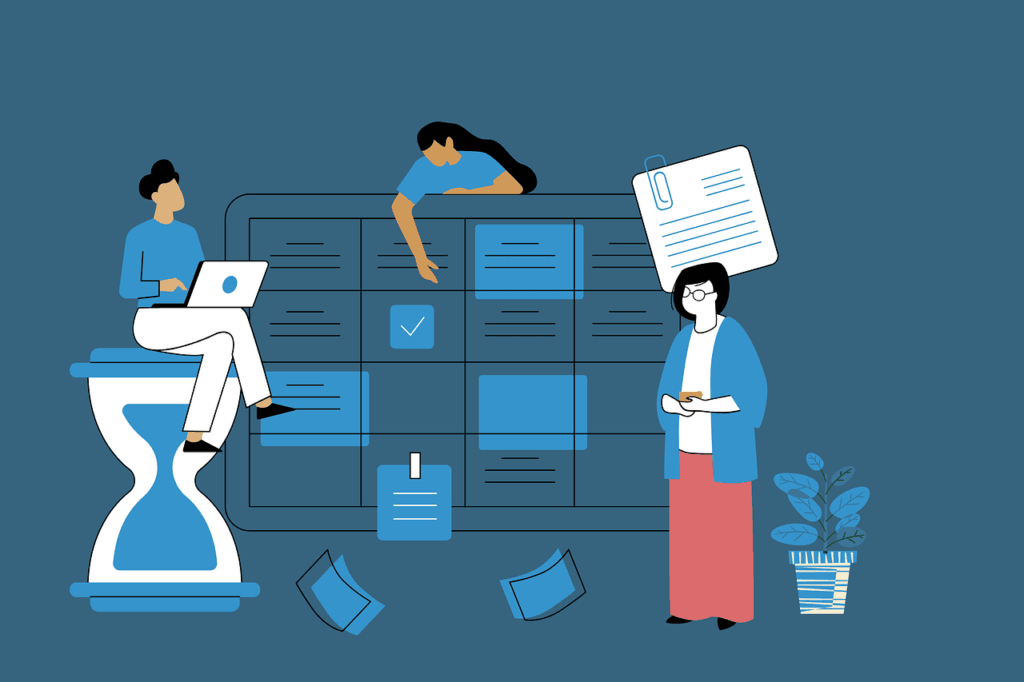
Understanding the mechanics of a funnel is vital, but to genuinely master the art of conversion, one needs to delve into the psychological factors influencing users at each stage. These underlying triggers can be the difference between a user advancing further or leaving altogether.
The Power of First Impressions
- Relevance: Upon landing on your page, users instantly assess whether the content aligns with their needs or intent. Ensuring that your landing pages directly address the user’s pain points or questions can drastically reduce bounce rates.
- Aesthetics: An uncluttered, visually appealing design can enhance trust and encourage further exploration. Humans are visual creatures; a polished, professional appearance can set a positive tone for the entire user journey.
Curiosity & Engagement
- Information Gaps: Humans are naturally inclined to seek closure. By presenting intriguing snippets of information and then offering detailed insights upon further interaction, you can effectively pull users deeper into the funnel.
- Interactive Elements: Quizzes, calculators, or even simple hover effects can actively engage users, capitalizing on our inherent desire for interactivity and exploration.
Building Trust
- Social Proof: We’re social beings, inherently influenced by the actions and opinions of others. Displaying testimonials, reviews, or even simple counters of how many people have purchased or signed up can sway decisions.
- Consistency: Users should feel a consistent narrative and branding throughout their journey. Inconsistencies can introduce doubt and hesitation.
Urgency & Scarcity
- FOMO (Fear of Missing Out): This is a powerful motivator. Limited-time offers, countdown timers, or showing limited stock can expedite decision-making and reduce procrastination.
- Clear CTAs: Sometimes, users need a clear, compelling nudge to take action. A well-placed and effectively worded Call-to-Action can tap into the user’s desire to gain the benefits your product or service offers.
Alleviating Commitment Concerns
- Risk Reversal: Offer money-back guarantees or free trials. This reduces the perceived risk associated with the commitment, making it easier for users to take the final leap.
- Clarity: Ensure that all terms, especially concerning payments, returns, or subscriptions, are transparent. Ambiguity can deter users on the verge of conversion.
Cultivating Trust Through Transparency
Building a Foundation of Trust
In the digital age, users are increasingly wary of where they choose to spend their time and money. Establishing trust from the outset of the user journey is paramount. This involves clear communication about what your company does, the value it provides, and how user data is handled. Transparent pricing, easy-to-find contact information, and visible security measures (such as SSL certificates) also play a crucial role in building this trust.
Leveraging Trust Badges and Certifications
Including trust badges and certifications on your website can significantly influence conversion rates. These symbols of trust help alleviate user concerns, especially at crucial decision-making points within the funnel. Whether it’s industry awards, SSL certificates, or security seals, these markers serve as a non-verbal endorsement of your brand’s credibility and reliability.
Enhancing Decision-Making with Social Proof
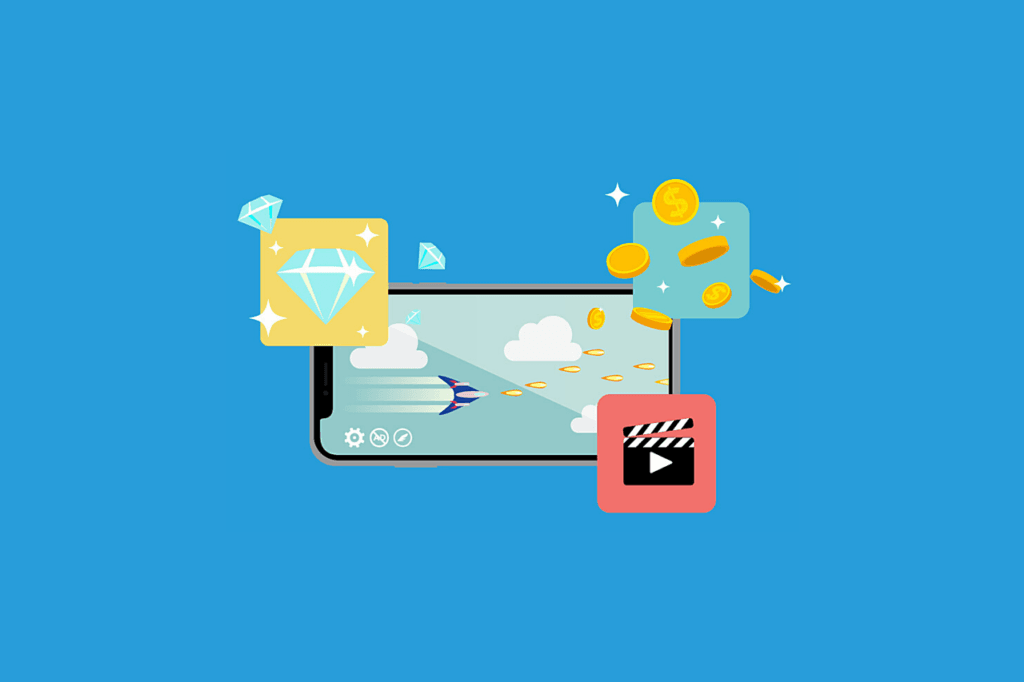
The Role of Social Influence
Social proof, the psychological phenomenon where people assume the actions of others in an attempt to reflect correct behavior for a given situation, is incredibly powerful in the context of online conversions. Showcasing user testimonials, case studies, and the number of happy customers or successful projects can significantly influence potential customers’ decision-making processes.
User Reviews and Testimonials
Dedicated sections for user reviews and testimonials, or even integrating them into product pages, can be highly effective. Seeing real feedback from peers can help prospective customers overcome skepticism and make informed decisions.
Optimizing for Emotional Engagement
Connecting Through Emotional Triggers
Understanding and leveraging the emotional triggers specific to your audience can dramatically increase engagement and conversions. This involves creating content and messaging that resonate on an emotional level, whether it’s through humor, empathy, aspiration, or storytelling. Emotional engagement can turn a passive observer into an active participant, moving them through the funnel with a greater sense of connection to your brand.
Storytelling as a Strategy
Incorporating storytelling into your marketing strategy can transform the way users perceive your brand. A compelling narrative that aligns with your audience’s values and aspirations can foster a deeper, more meaningful connection, making the conversion process more about relationship building than transaction completing.
Employing Cognitive Ease for Smoother Conversions
Simplification and Clarity
The human brain gravitates towards experiences that require minimal cognitive effort. Ensuring that your website and conversion process are as simple and intuitive as possible is crucial. This means clear, jargon-free language, a clean and straightforward design, and a seamless checkout or sign-up process. Simplification reduces cognitive load, making users more likely to complete the conversion process.
Predictable Patterns and Familiarity
Leveraging design and navigation patterns familiar to your users can reduce friction and enhance usability. When users feel at ease and can navigate your site intuitively, they are more likely to engage deeply and convert.
The Impact of Color Psychology
Influence of Color on Perception and Behavior
Colors evoke specific emotions and can significantly impact user perception and behavior. Choosing the right color scheme for your website, CTA buttons, and overall branding can influence how users feel about your brand and their likelihood of taking action. For example, blue can evoke trust and security, while orange might inspire immediate action or enthusiasm.
The psychological underpinnings of conversion funnels are both complex and nuanced. By building trust through transparency, leveraging social proof, optimizing for emotional engagement, employing strategies that reduce cognitive load, and understanding the impact of color psychology, startups can create more effective and compelling conversion funnels. Each of these strategies should be considered a piece of a larger puzzle, where the ultimate goal is to guide users toward conversion by aligning with their psychological needs and expectations.

Setting up inbound conversion funnels at my startup, DesignRush, was a meticulous process that paid dividends in our growth journey. The planning started with a clear understanding of our customer personas, and the journey was segmented progressively into awareness, consideration, decision, and retention stages.
Implementation depended on the deployment of a variety of tools like SEO, content marketing, webinars, and targeted landing pages that matched customers’ buying stages and interests. For storing and tracking results, we relied on digital analytics tools such as Google Analytics and HubSpot which offer in-depth insights into user behavior and interaction.
Improvement came with A/B testing; for example, by tweaking landing page elements, or email marketing content, we were able to refine our strategies based on the response.
Key takeaways from setting up the funnel are, first, the importance of knowing your customer deeply–their pain points, motivations, and consumption habits.
Second, mapping out the buyer’s journey can dramatically increase conversions. Lastly, keeping an iterative mindset; being ready to test, tweak, and improve was vital for consistent growth.
Gianluca Ferruggia, General manager at DesignRush

It’s essential to break down the KPIs you use for your inbound funnel in a few key ways.
First, focus on the effectiveness of different parts of the funnel itself. If you’re great at getting new emails on your list but bad at moving them through, this points to issues in your landing page or follow-up emails.
If you’re getting people to your site and then suffering from abandoned carts, you need to improve your ecommerce experience and consider adjusting your prices.
You also need to look at the types of customers you’re bringing in.
If customers either convert quickly or not at all, it’s a clear sign that you’re losing some people to the competition or that your customers are making their decisions more quickly than you expected.
Nick Valentino, VP of Market Operations of Bellhop Atlanta Movers

Our initial planning began with a clear identification of our target audience – language learning enthusiasts, followed by crafting persona-based content to attract them.
Our implementation involved a multi-channel approach involving SEO optimized blog posts, engaging quizzes, social media marketing, and a referral program to capture leads.
We store and track the results through various digital analytics tools like Google Analytics and Hotjar, enabling us to measure performance and identify areas of improvement.
Retaining users was a key challenge we addressed by introducing personalized content, gamification, and user achievement badges within our language learning app, significantly boosting our user engagement and in-app time.
The key takeaways from our inbound conversion efforts include the importance of data-driven decision-making, focusing on user retention strategies, and constantly iterating and optimizing the funnel stages for an improved user experience.
Simon Bacher, CEO and co-founder of Ling
In Conclusion: The Art & Science of Funnel Analysis
The realm of funnel analysis is a blend of art and science, where the mechanics of user flow and navigation intertwine with the deep-seated psychological triggers that influence decision-making. By understanding and optimizing both these facets, businesses can not only drive conversions but also foster lasting relationships with their users.
But, as with all tools, it’s the intent behind their use that matters most. Ethical considerations must guide our strategies. In the age of information, trust is paramount. It’s not just about leading users to the end of a funnel, but ensuring that the journey there provides real value, addresses genuine pain points, and upholds the principles of transparency and authenticity.
Read Next
- 15+ Best Digital Asset Management Software to Transform Your Workflow
- The Ultimate Guide to Digital Asset Management
- 23+ Ultimate Customer Support Tools to Empower Your Business
- Data Processing Agreement: An International Perspective
- Best SEO Tools in 11 Categories to Elevate Your SEO


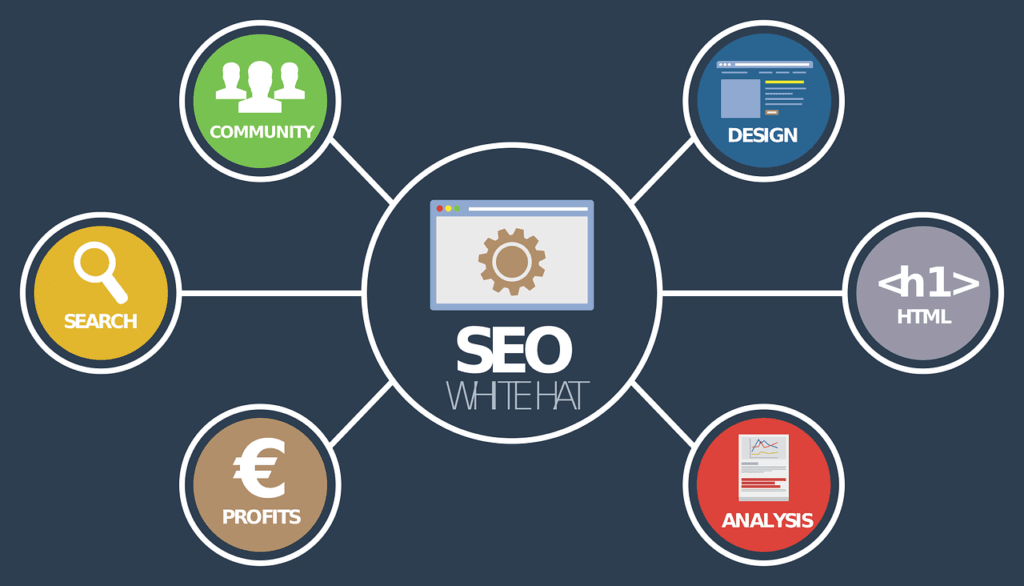









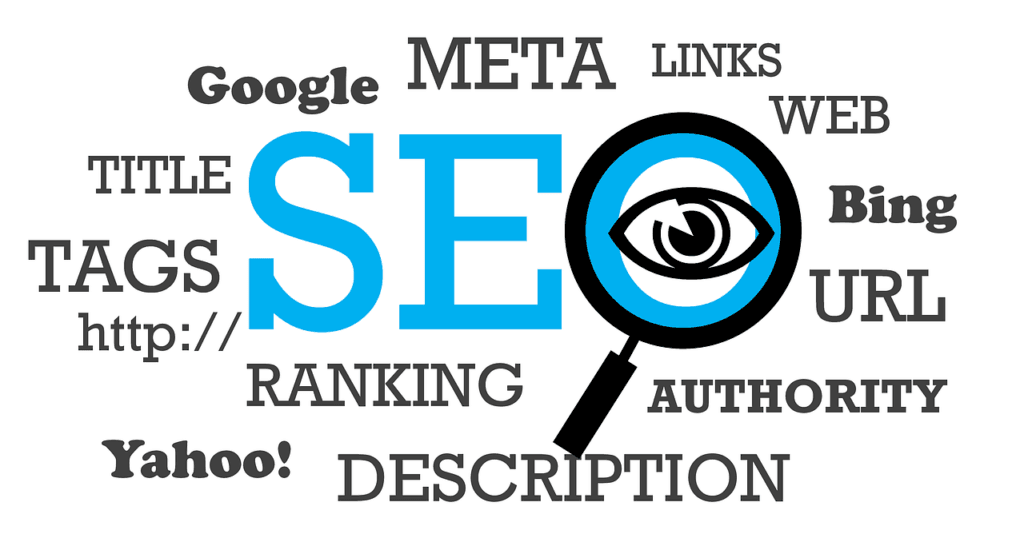

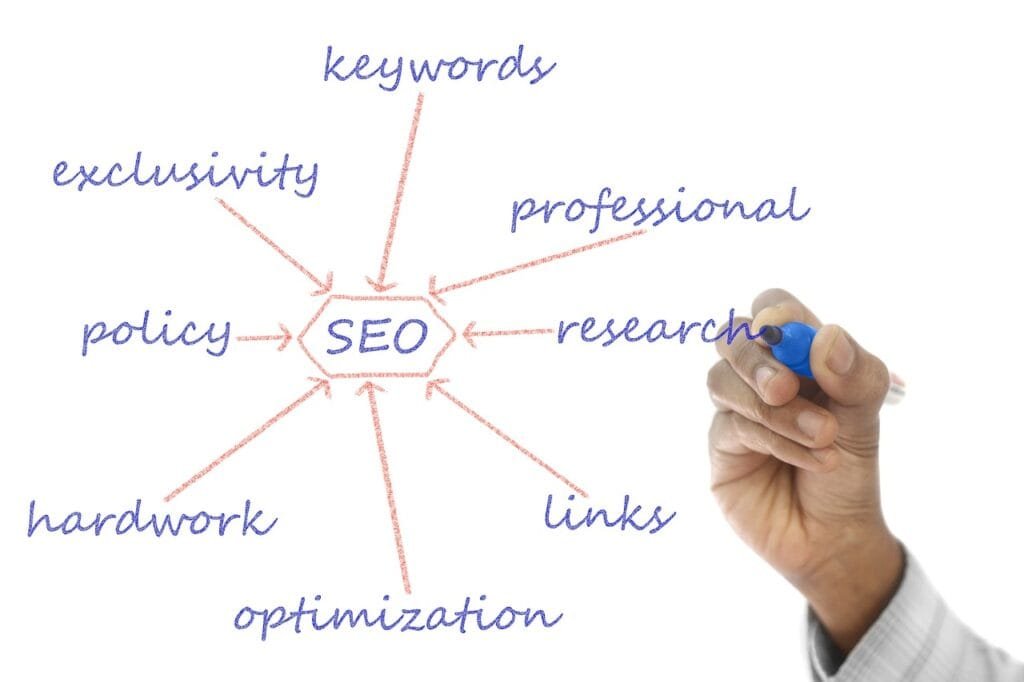



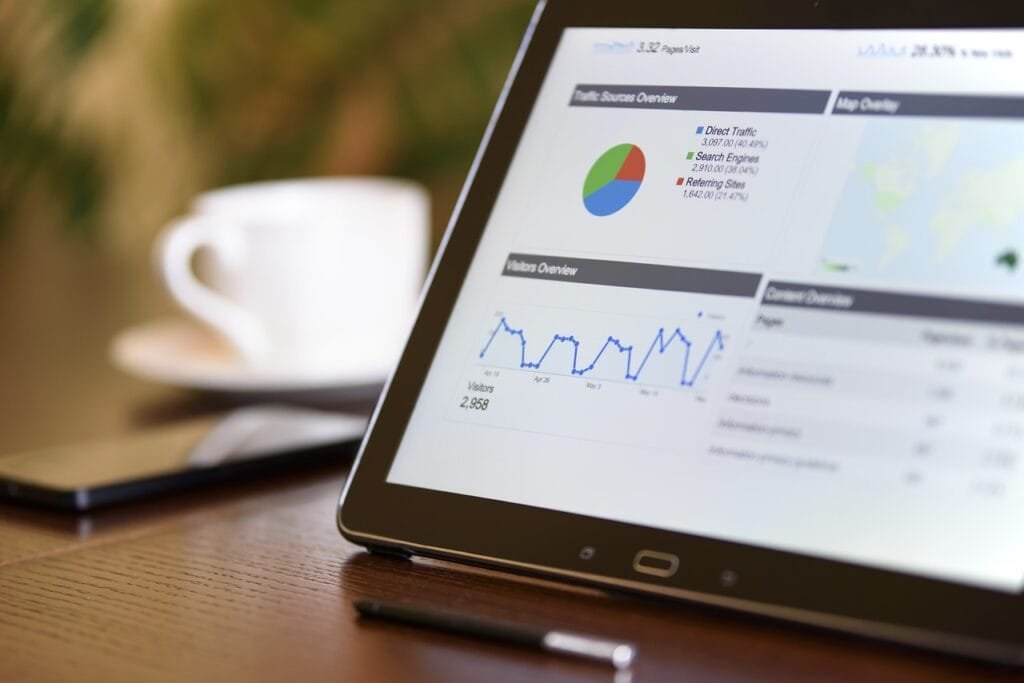


Comments are closed.